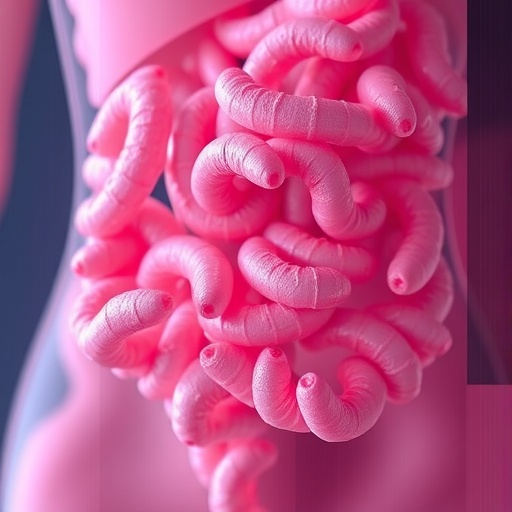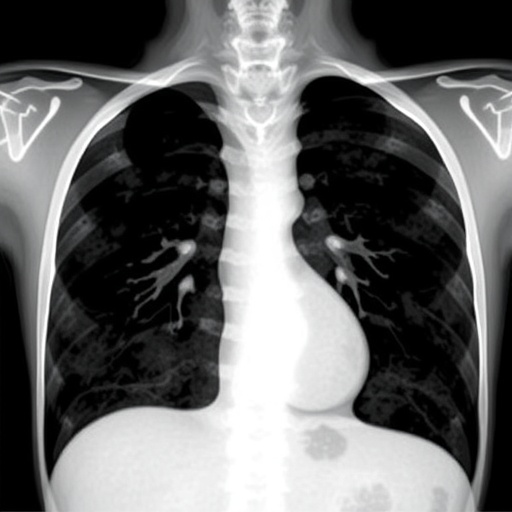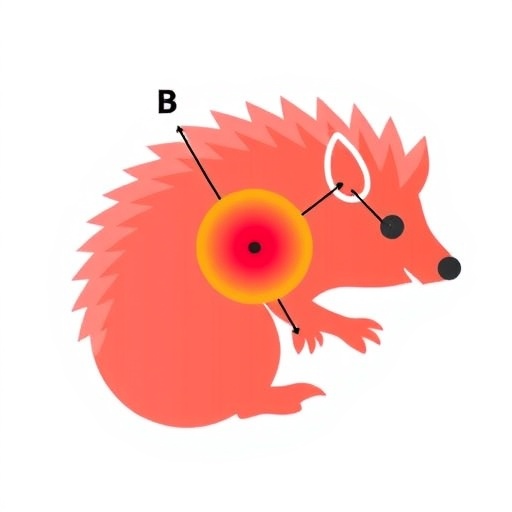In a groundbreaking study unveiled at UEG Week 2025 in Berlin, scientists have provided the first direct evidence that microplastics – those tiny plastic fragments smaller than five millimeters found ubiquitously in our environment – can induce significant alterations in the human gut microbiome. This discovery emerges from an innovative ex vivo approach utilizing human stool samples, marking a major milestone in understanding the intersection between environmental contaminants and human health at a microbiological level. The findings, while still preliminary, hint at complex interactions through which microplastics could influence not only digestive health but also systemic conditions linked to microbial imbalances, such as depression and colorectal cancer.
The research project, conducted under the aegis of microONE—a forefront COMET Module initiative coordinated by the CBmed research center in Austria—set out to probe the elusive effects of micro- and nanoplastics within the human gastrointestinal ecosystem. By recreating the human gut microbiome in controlled laboratory bioreactors from stool samples obtained from healthy volunteers, researchers exposed these cultures to five prevalent microplastic polymers. These included polystyrene, polypropylene, low-density polyethylene, poly(methyl methacrylate), and polyethylene terephthalate, selected due to their widespread presence in consumer products and environmental residues.
The study carefully calibrated microplastic concentrations to mirror realistic human exposure levels estimated from dietary and environmental studies, while also assessing higher concentrations to uncover potential dose-response relationships. Remarkably, despite unchanged total and viable bacterial cell counts across treated and control samples, the microplastic-exposed cultures displayed a consistent and statistically significant reduction in pH levels. This acidification signals a fundamental shift in microbial metabolic activity, possibly reflecting altered fermentation patterns or stress responses within the gut microbial community.
Delving deeper into the compositional changes of the gut microbiota, the research unearthed polymer-specific shifts among bacterial taxa. Key bacterial families exhibited fluctuations in their relative abundance, notably within the phylum Bacillota (Firmicutes), which plays a critical role in nutrient metabolism and gut homeostasis. Families such as Lachnospiraceae, Oscillospiraceae, Enterobacteriaceae, and Ruminococcaceae showed differential responses depending on the microplastic type, suggesting that distinct polymers create varying microenvironments impacting microbial colonization and competition.
These shifts were mirrored by altered profiles of bacterial metabolites, consistent with observed pH changes. Compounds like valeric acid and 5-aminopentanoic acid, both important short-chain fatty acids implicated in gut health, were modulated by specific microplastics. Additionally, fluctuations in amino acids such as lysine and organic acids like lactic acid were detected, illustrating a multifaceted impact of microplastics on microbial metabolic pathways. Such biochemical perturbations could indicate stress responses or shifts in energy metabolism, potentially translating to broader physiological effects.
Importantly, the microbial and metabolic alterations documented bear striking similarity to patterns previously implicated in pathologies including depression and colorectal cancer. Emerging literature identifies dysbiosis of the gut microbiota and associated metabolite imbalances as central factors in the etiology of these conditions. The study’s revelations that microplastics can induce comparable microbiome changes suggest that chronic microplastic ingestion might contribute to disease risk or progression, opening new avenues for public health investigation and preventive strategies.
Lead author Christian Pacher-Deutsch elucidated potential mechanisms behind these phenomena, emphasizing the nascent state of understanding. He posited that microplastics may physically modify the gut milieu, notably by providing novel surfaces for biofilm formation which selectively foster colonization by certain microbes. Alternatively, microplastics could serve as vectors for chemical substances, including plastic additives or absorbed pollutants, that modulate bacterial metabolism directly. These mechanisms collectively could disturb microbial communities, instigating cascades of biochemical changes and feedback loops that shift the microbial ecosystem’s equilibrium.
Furthermore, Pacher-Deutsch highlighted environmental and lifestyle factors contributing to ubiquitous microplastic exposure in humans. With microplastics detected in marine life, table salt, bottled water, and even municipal tap water, ingestion constitutes a major exposure route, supplemented by inhalation and dermal contact. This omnipresence underscores the relevance of the findings to general populations, emphasizing the urgency of comprehensive risk assessments regarding long-term microplastic ingestion effects.
The broader implications of this pioneering work resonate within the emerging One Health perspective, linking environmental pollutants, microbial ecology, and human health outcomes. Understanding how microplastics interface with the gut microbiome enriches the scientific narrative that environmental contaminants silently but profoundly shape human physiological landscapes. However, as Pacher-Deutsch underscores, while these findings establish microplastics as influential microbiome modulators, further research is crucial before definitive claims on health outcomes can be made.
In practical terms, these insights advocate for precautionary measures to reduce microplastic exposure where feasible. Strategies could include improving water filtration systems, redefining plastic manufacturing standards to minimize environmental shedding, and raising public awareness of daily microplastic sources. Simultaneously, the scientific community must prioritize longitudinal studies and clinical investigations to elucidate the causal links between microplastic ingestion, microbiome dynamics, and disease progression.
The microONE study thus represents a seminal step in environmental health sciences, applying rigorous ex vivo modeling to capture human-relevant insights otherwise unattainable in vivo. By dissecting the nuanced ways microplastic particles alter microbial communities and their metabolic outputs, this research pioneers new frontiers in the quest to mitigate the insidious impacts of plastic pollution on human well-being. As the planet grapples with escalating plastic contamination, such interdisciplinary endeavors will be critical in safeguarding public health for future generations.
Subject of Research: Effects of microplastic exposure on the human gut microbiome and associated metabolic changes.
Article Title: Microplastics Found to Alter Human Gut Microbiome in First Study of Its Kind.
News Publication Date: 7 October 2025
References:
1. Pacher-Deutsch, C et al. Microplastic-induced alterations in gut microbiome and metabolism: Insights from an ex vivo bioreactor model. Presented at UEG Week 2025; 7 October 2025; Berlin, Germany.
2. Yamamura R., et al. (2023). Intestinal and fecal pH in human health. Frontiers in Microbiomes, 2, 1192316.
3. Ohigashi S., et al. (2013). Changes of the intestinal microbiota, short chain fatty acids, and fecal pH in patients with colorectal cancer. Digestive Diseases and Sciences, 58(6), 1717-1726.
4. Kumar A., et al. (2023). Gut microbiota in anxiety and depression: unveiling the relationships and management options. Pharmaceuticals, 16(4), 565.
5. Ai D., et al. (2019). Identifying gut microbiota associated with colorectal cancer using a zero-inflated lognormal model. Frontiers in Microbiology, 10, 826.
Keywords: Microplastics, Gut microbiome, Microbial metabolism, Environmental health, Depression, Colorectal cancer, Ex vivo bioreactor, Plastic pollution, Microbial dysbiosis, Short-chain fatty acids, Biofilm formation, Human health
Tags: bioreactors for gut microbiome studiescolorectal cancer and gut microbiomeCOMET Module research on microplasticseffects of polystyrene and polypropyleneenvironmental plastic pollution and healthex vivo study of microplasticshuman health and environmental contaminantsimpact of microplastics on digestionmicrobiome and systemic health conditionsmicroplastics and gut microbiomemicroplastics in human stool samplesrelation between microplastics and depression





